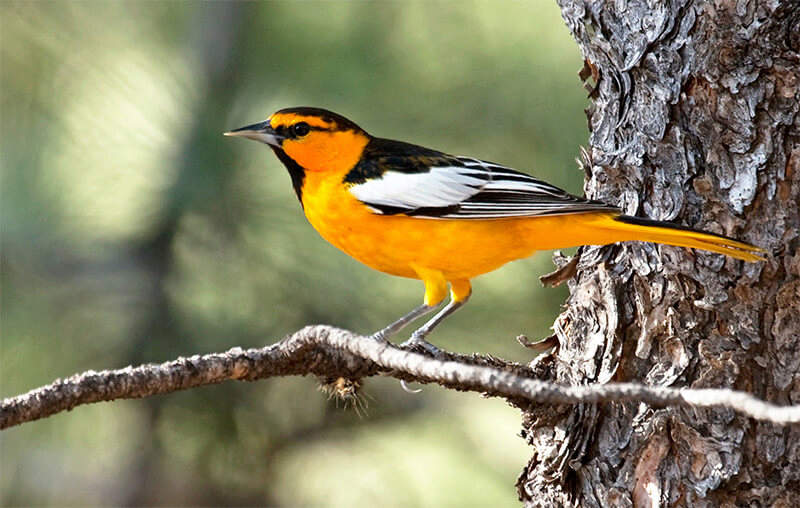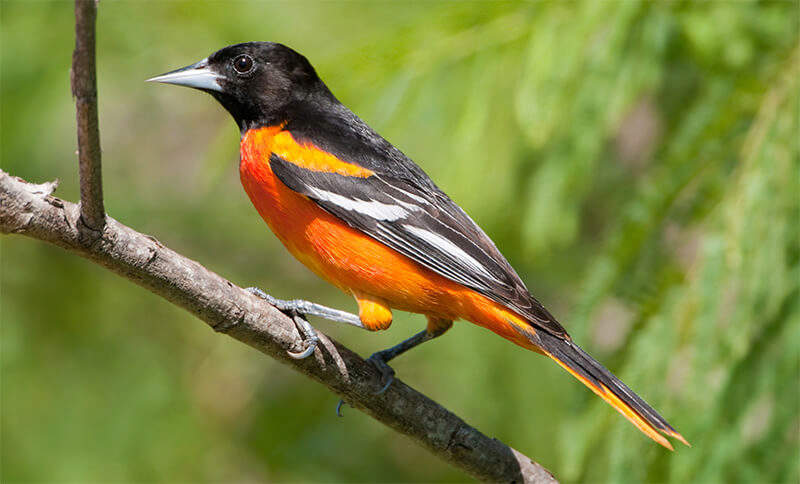Featured Birds: Baltimore and Bullock's Orioles
Red-winged Blackbirds, singing robins, migrating geese, crows carrying sticks—all are welcome signs that spring is here, even though late snowfalls often occur after we notice any of them. By the time Baltimore and Bullock’s Orioles arrive, we can usually trust that snow is a thing of the past.
One or the other of these magnificent orange birds nests over most of North America, Baltimores in the East and Bullock’s in the West. The two species share many similarities—the males of both are a stunning orange, females more yellowish; both feed on a combination of insects, fruits, and nectar; both construct a dangling nest made of sturdy plant fibers; both tend to spend most of their time near the tops of trees, and the song of both is a richly tuneful whistle.

Male Bullock's Oriole
Unlike most fruit-eating birds, Baltimore Orioles are specifically drawn to the darkest, richest colored berries and fruits. They can cause some crop damage; they also eat a lot of destructive caterpillars. Both species of orioles can stick their sharp bill into a fruit and open their mouth to cut a juicy well into it. Their brush-like tongue—a feature of many nectar-feeding birds—helps them lap up the sap.
Both male and female orioles sing. The female Bullock’s Oriole has a slightly different song than the male’s, with a different end and harsher notes, and she often sings more persistently than the male. The female Baltimore Oriole doesn’t sing as often or as loudly as the male.
Orioles build their dangling nests of fairly long fibers—grass, strips of grapevine bark, wool, horsehair, and artificial fibers such as yarn and twine. The female does most or all of the nest construction.

Male Baltimore Oriole
A nest shaped like a purse takes a lot more time to construct than a simple cup nest. It can take over 2 weeks to build an oriole nest, though in ideal circumstances it may, rarely, take only 4 days. The tradeoffs for all that extra work are a nest on too slender a branch for squirrels, crows, and other nest predators to gain access, and a nest covered from above to protect chicks from many weather conditions. When food is scarce or weather conditions poor, orioles may produce only two or three eggs and young, but in good conditions may raise up to 7 in a single brood.
Orioles are fairly easily attracted to oranges and nectar or jelly feeders during migration. To encourage them to remain, we need to provide more than just carbohydrates. Tall shade trees with sturdy but slender outer twigs are ideal as nesting trees, and fruit trees provide plenty of food, both fruits and insects.





